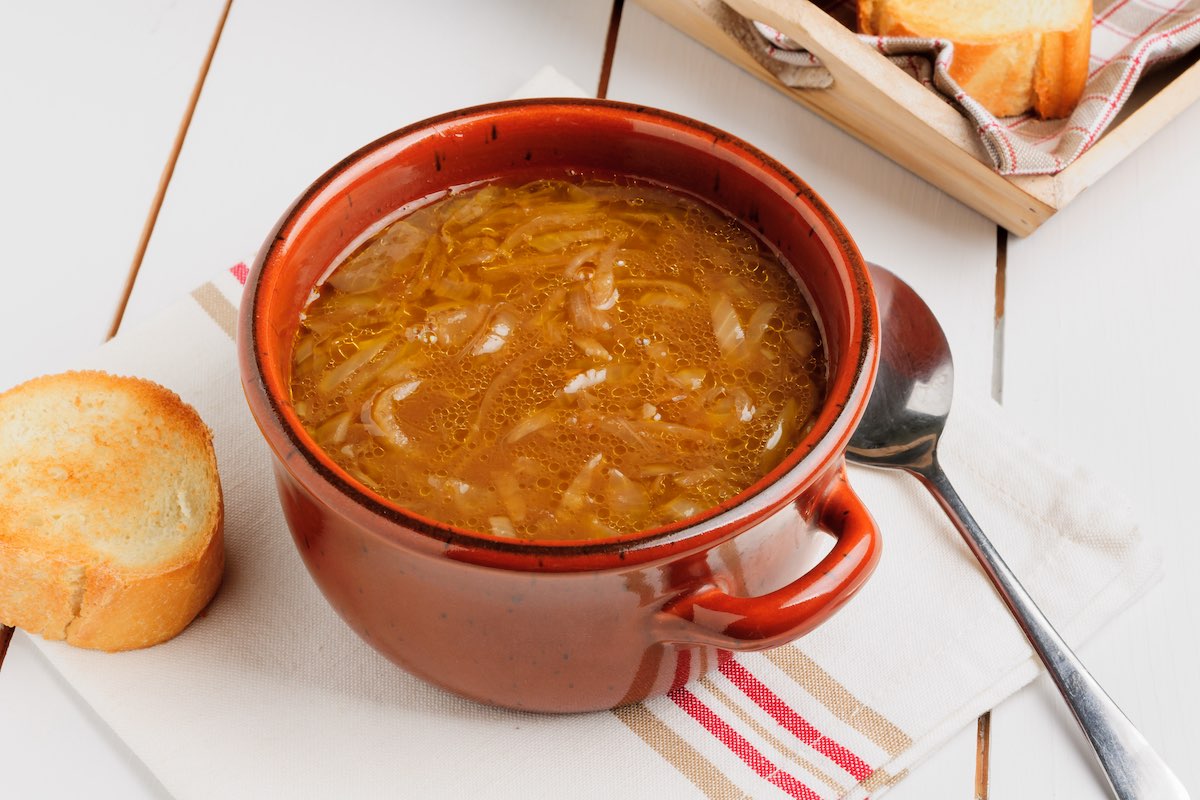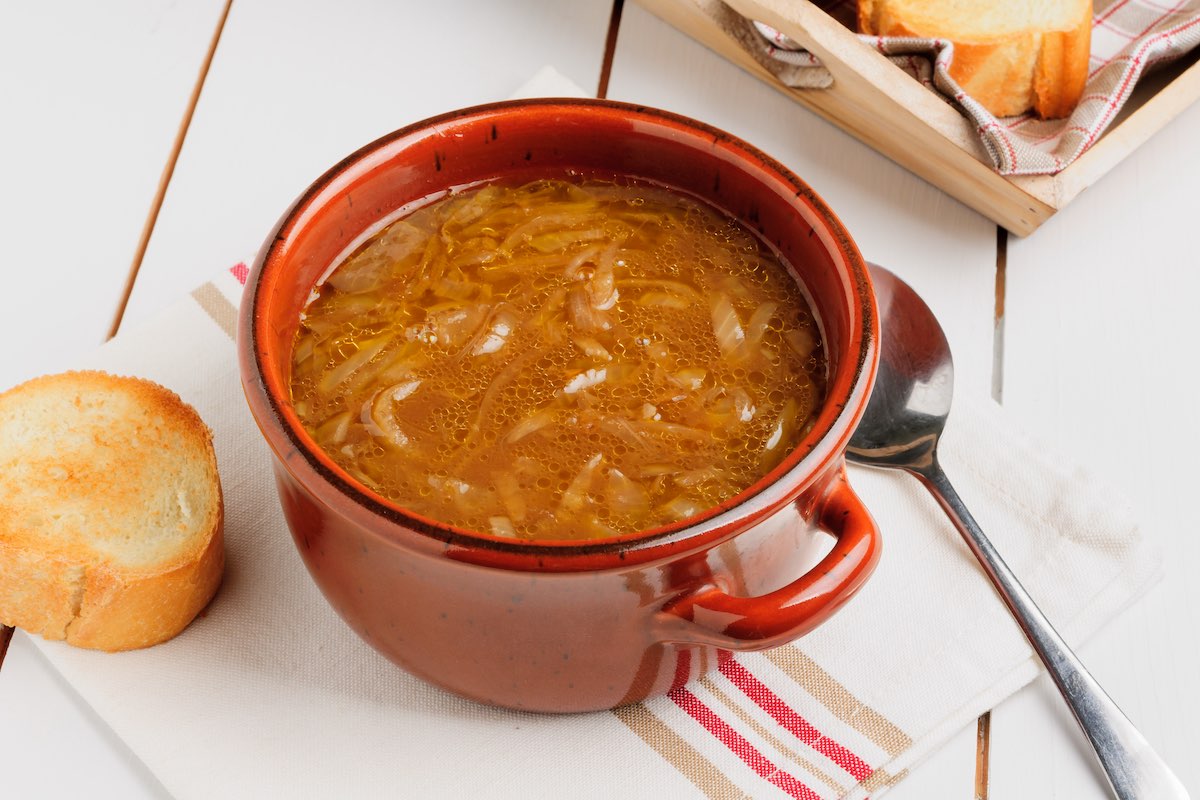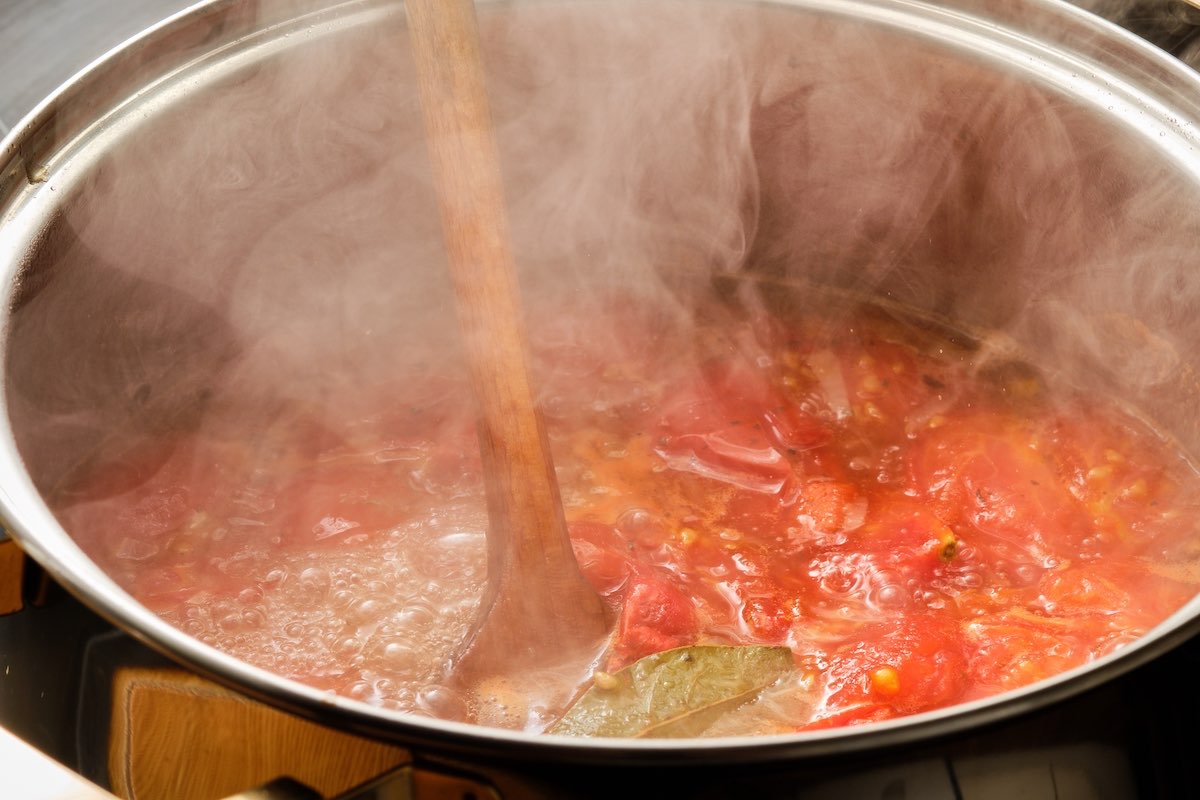Recipes
Florentine onion salad


Creamy and rich in flavour, Florentine Onionade is not your usual onion soup. Try it with crusty bread and you will fall in love with it.
Onion soup is one of those recipes that makes most people turn up their noses. In fact, it is often really difficult to go beyond the strong flavor and tearful smell that this vegetable has when raw. However, if you decide to prepare Florentine onionade, you will discover that recipes with onions are not that bad, it's all about cooking them in the right way and choosing the right variety of onion.
In this regard, since it is a Tuscan recipe, the onion we are going to use is that of the municipality of Certaldo . Round and slightly flattened in shape and with a purple color, the Certaldo onion is the sine qua non ingredient in this soup , which could not be called Florentine onion. Obviously, if you can't find this typical product, opt for a Tropea onion, easy to find all year round.

How to prepare the Florentine onionade recipe
You're probably wondering what makes this recipe different from any onion soup. The answer lies in the ingredients: not only the Certaldo onion but also the addition of egg yolks, cherry tomatoes and toasted bread make this recipe a truly typical Tuscan dish.
- To prepare the onionade, begin by slicing the onions rather finely and browning them over a low heat in an earthenware pan with the oil .
- When they have wilted, add the vegetable broth and the cherry tomatoes and let thicken for about 30 minutes. You should obtain a creamy consistency.
- Season with salt and pepper , remove from the heat and add the egg yolks and parmesan , mixing well.
- Flavored with fresh basil leaves, distributed on plates and completed with a drizzle of raw oil and a slice of Tuscan bread toasted in a pan.
Do you love onions? Don't miss the French onion soup
Conservation
The onionade will keep in the refrigerator for 2-3 days. Reheat it in a pan before bringing it to the table without forgetting the crusty bread.
Origin and history
Onion soup is a poor dish widespread in various areas of Italy and the world. As often happens, there is no single recipe but family variations passed down by word of mouth which exploit local ingredients and products . In the case of the Florentine onion, we have the Certaldo onion , grown between San Casciano and Scandicci.
We have already talked about its characteristics in the introduction, underlining its pungent flavour, its purple color and its flattened shape. What we haven't said is that traces of this cultivation are also present in the texts of Boccaccio who mentions it in a famous short story in book VI:
“Certaldo is a castle in Val d'Elsa located in our countryside… To which one of the friars of Santo Antonio used to go once every year for a long time, whose name was Brother Cipolla, perhaps no less for the name that for other devotion willingly seen there, with the fact that that land produces onions famous throughout Tuscany.”
Cultivated since the Middle Ages, the Certaldo onion was included by the Aliberti Counts, owners of the village, in the town's coat of arms with the motto: "By nature I am still strong and sweet / and both those who live and those who work like me" . In 1633 the onion was removed by the priors who governed the village, considering it not very noble and replacing it with the more traditional lion but, about 200 years later, in 1867, the municipal council restored the original coat of arms. Today, the Certaldo onion is a Slow Food Presidium .
Riproduzione riservata © - WT











